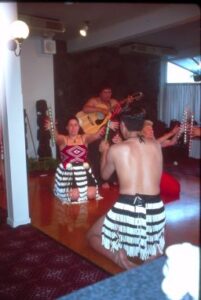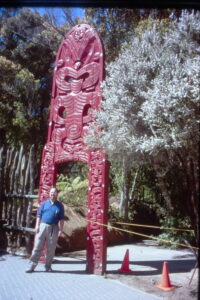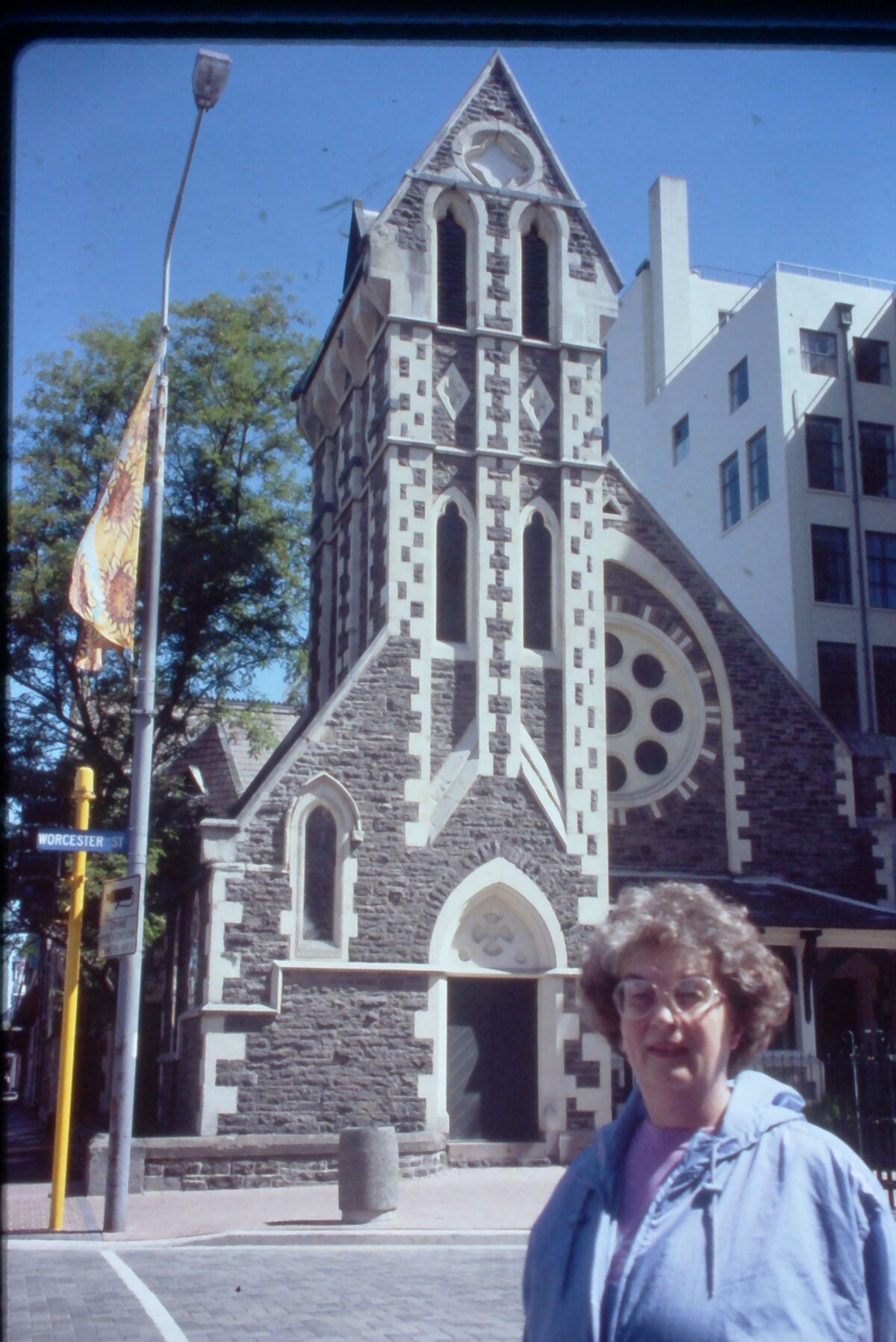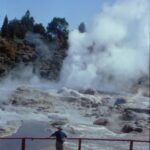
Over a Thanksgiving break, we left early for a conference in Palmerston North, New Zealand.
We had a great time in NZ, the least culturally uncomfortable place I have ever been. The stores were the same (KMart?), the language similar (two people separated by a common language), and the ambience, well, as I told Carolyn, I do not think we need to go to England. We have not been there, and the real thing would probably disappoint us. If nostalgia has a home, it’s probably NZ (or to put it differently, 3 million people is a city, not a country!).
We sampled as much of it as we could in 8 days. Auckland (airport to train station); Rotorua (a cross between the Wisconsin Dells– the native Maori live there–and Yellowstone’s geothermal features); NZ is on a fault and could go either from earthquake or volcano at any time; Palmerston North (where the conference was held);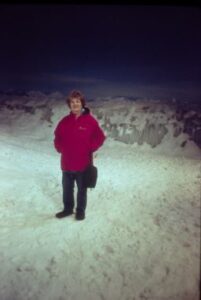
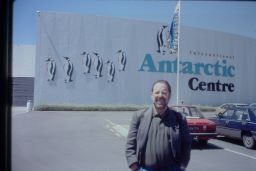
Christchurch (the most English city in NZ); the train across the “Alps” (these people think they’re back “home”) to Greymouth; and Wellington (where I spent some time with Scouts NZ). It’s the gateway to the Antarctic, and a museum near the boat departure dock gave us a taste of frigid weather.
When I got back (after 42 hours in the air!), I told my classes that the answer to the question, “Is NZ really in Asia,” would probably be, “Yes, but they don’t really want to be there.”
They see themselves as different (see the map with South facing up). But I think the real map would be of England next to NZ. They describe themselves as “England’s last, least, most loyal colony”; they talk about going home for holiday, home being England, and that’s 3 generations ago; the news is BBC, the weather forecasts for England and Wales; the sports–football is Manchester 2, Birmingham 1. I know more about Lord Spencer’s divorce than you do. Spiritually –universities, government, labor unions, and history–they are England.
The picture I wish I had taken:
Carolyn napped in Rotorua while I took a bike ride around town. I found myself at a public park, with a lawn bowling green. All the men (white, dressed in white, and over 62; genetically, someone told me, the time bomb goes off and they go crazy for lawn bowls) were out. Alas, no camera, but that captured ye Olde England for me.
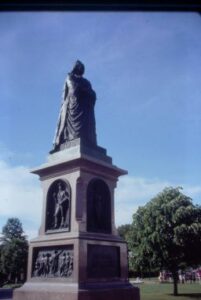
Though they are far from everything (6500 air miles from LA), in a lush semi-tropical environment south of the equator, with animals and fauna indigenous to NZ, they are part of Asia Pacific, kicking and screaming. As much as anything, business has Asianized NZ. They were kicked out of the Commonwealth when Britain opted for the Common Market in the early 1970s. While Britain was NZ’s leading trading partner (70%) in 1950, and even as late as ‘82 was the leading economic partner (at 14%), that’s no longer true. It has taken fifteen years to realize it–or as the Aussies we hung around with at the conference pointed out, they’re at least 15 years behind us.
The leading countries in NZ trade today are Australia, Japan, the United States, Korea, and Britain. Of the European countries, only Britain, at 6% has a large share. And it is roughly the same with imports. As Don MacKinnon, minister for trade told our conference (and he has been one of the biggest internationalizers), “we can’t change where we’re at.”
In addition to trade, half the tourists, and 20,000 of the students are from Asia; more students are studying Japanese than French right now. Not all that (right now) is healthy because the currency crisis (and serious structural problems) have affected NZ. Epigrammatic was the story of the Malaysian tie company that canceled an order for $50,000 in ties because Mahathir said to conserve on the currency. Nationalism and protectionism will hurt NZ, as will the decline in the intra-Asia Pacific tourist trade.
Nonetheless, NZ is part of Asia Pacific, as is obvious in the trade. The trade with Australia is more heavily in manufactured items than with the rest of the world, but the rest of the trade is dominated by food and beverage (not just Steinlager beer, but dairy products–butter in the hotels in China and Thailand, for example, and lamb–the 60 million sheep crossing the road is NZ’s idea of a traffic jam), and primary products such as wool and lumber, the latter making Japan and Korea the largest volume market for NZ. But as one of our speakers pointed out, these are commodities, and commodities are price-sensitive products. The advantage NZ has in agricultural goods is obvious–lots of land (especially when contrasted with so much of Asia), and a counter-cyclical market to the northern hemisphere, except for California, which threatens to become the Kiwi producing capital of the world (all year round market).
And having, in the 1980s, cast off the ANZUS pact, besieging US nuclear vessels, etc., NZ again has become part of the Asia Pacific region.
Impressions:
1) Beautiful agricultural country. If I were sophisticated, I would have called it Scotland (but I’m not, so I thought it was like Wisconsin, but with more sheep). Consequences: 1) commodity markets in the world (cannot brand kiwis); 2) major foreign export; 3) trade mostly with Asia (to the great dismay of those who think they are English). Great lamb, incidentally, not like here.
2) Christchurch is wonderful; indeed, the cities reminded me of the Canadian, some stunning older architectural wonders, but clean. I told Carolyn they are more like Toronto/Winnipeg than Chicago. 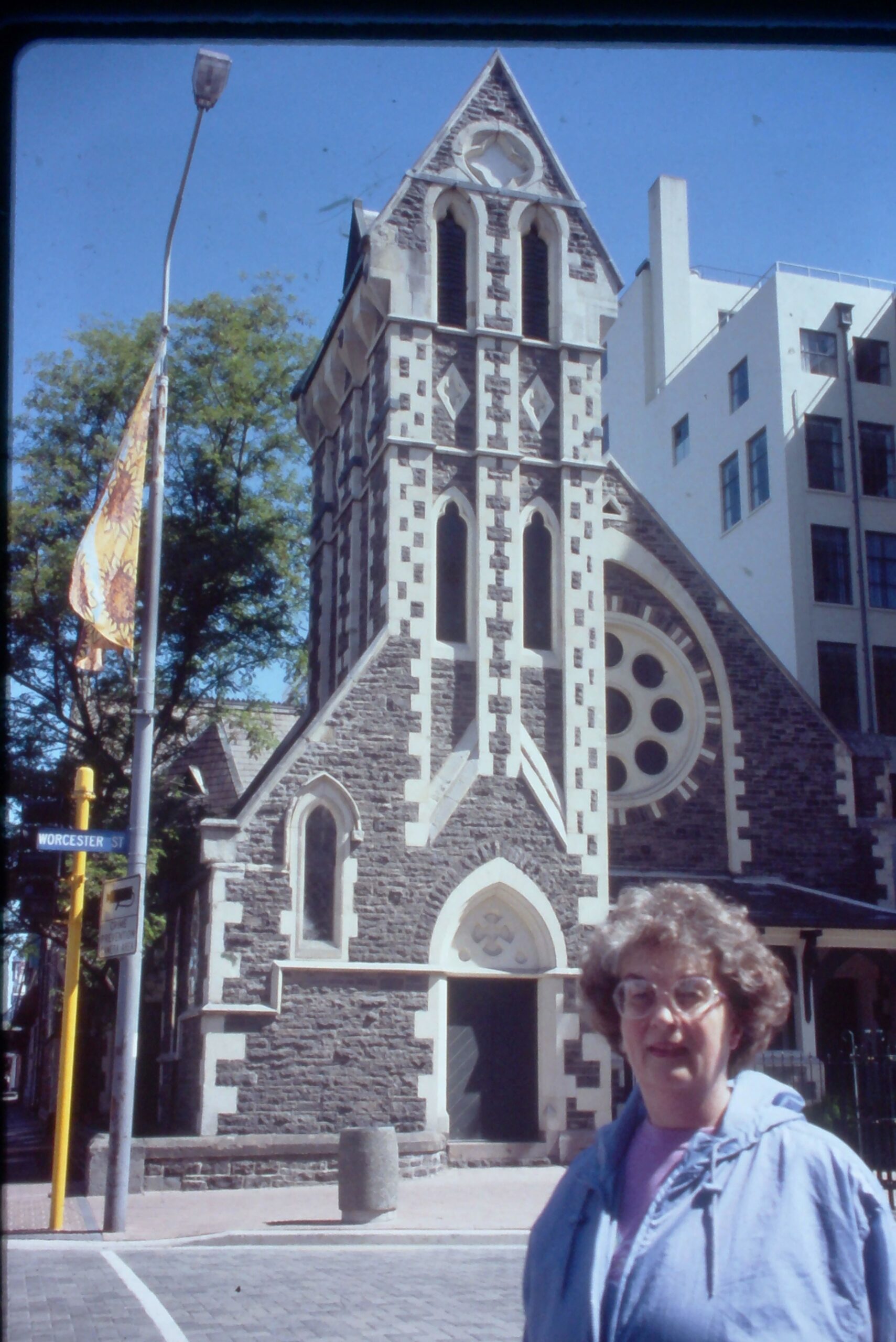 Christchurch has the University of Canterbury, Christ College, the Cathedral (and a gambling casino to help attract the Asian invasion of tourism that is the second largest industry). It’s also the gateway to the Antarctic, which made for an interesting museum.
Christchurch has the University of Canterbury, Christ College, the Cathedral (and a gambling casino to help attract the Asian invasion of tourism that is the second largest industry). It’s also the gateway to the Antarctic, which made for an interesting museum.
3) Their sport (missed the gridiron results!) was rugby. I bought a shirt, but do not know where I can wear it because their team is the All Blacks!
4) The Maori cultural features were interesting, and I can watch mud bubble all day (in the geothermal things)